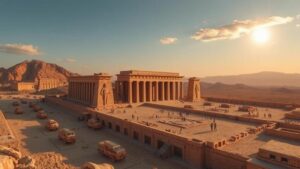Documenting the glowing waters of Puerto Mosquito Bay in Vieques.
Documenting the Glowing Waters of Puerto Mosquito Bay in Vieques
Puerto Mosquito Bay, located on the enchanting island of Vieques in Puerto Rico, is one of the brightest bioluminescent bays in the world. This natural wonder has captivated visitors and researchers alike, offering a glimpse into a unique ecosystem that thrives in the absence of light pollution. In this article, we will explore the science behind the glowing waters, the historical significance of the region, and the best ways to experience this mesmerizing phenomenon.
The Science of Bioluminescence
Bioluminescence is a natural phenomenon where living organisms emit light. In Puerto Mosquito Bay, this glow is primarily the result of a high concentration of dinoflagellates, a type of single-celled marine plankton. When disturbed, these tiny organisms emit light through a biochemical reaction involving luciferin, a light-emitting compound.
Statistics reveal that Mosquito Bay houses about 720,000 dinoflagellates per liter of water, one of the highest concentrations recorded globally. The phenomenon can be best experienced during warmer months when temperatures rise above 20 degrees Celsius, enhancing the visibility of the glow.
Historical Context
The historical significance of Vieques is profound. Initially inhabited by the Taíno people, the island has seen various influences over the centuries, including Spanish colonization. In the early 20th century, Vieques was used by the United States Navy for live-fire training exercises, which significantly impacted its ecology.
In 2003, following widespread protests against military activities, the Navy relinquished control of the island. This transition has paved the way for the revitalization of Vieques natural resources, including the protection of Mosquito Bay, which is now recognized as a bioluminescent reserve.
Best Time to Visit
To witness the bays radiant glow, timing is crucial. best months to visit are from June to October. During these months, the dinoflagellates are most active, and the warm tropical climate contributes to their luminescence. Its advisable to plan your visit around the new moon, as darker skies will enhance the visibility of the glowing waters.
Experiencing Mosquito Bay
Visitors can experience the bioluminescent waters of Mosquito Bay through a guided kayak tour. e tours, typically lasting around two hours, allow you to navigate through the tranquil waters while observing the glowing effects of the dinoflagellates.
- Tour operators, such as Kayak Vieques and Bioluminescent Bay Tours, provide expert guidance about the bays ecology and safety measures.
- Participants are encouraged to wear dark clothing and minimal sunscreen to preserve the bays fragile ecosystem.
Conservation Efforts
Efforts to conserve Mosquito Bay include local initiatives aimed at preserving the delicate balance of this unique environment. The Puerto Rican government, in collaboration with environmental organizations, has implemented measures to limit pollution and light disturbances in the area.
Awareness campaigns are also in place to educate both locals and tourists on the importance of preserving this natural wonder. As visitor numbers grow, education about responsible tourism practices becomes increasingly vital.
Conclusion
Documenting the glowing waters of Puerto Mosquito Bay is not just an exploration of a natural wonder; it signifies a commitment to environmental stewardship and cultural heritage. As visitors and researchers continue to be drawn to this sparkling lagoon, the responsibility lies in understanding and protecting its fragile ecosystem for future generations.
The experience of kayaking through bioluminescent waters is both magical and transformative, providing a tangible connection to natures wonders. Whether youre an ecologist, a travel enthusiast, or simply curious about the glowing waters, Vieques presents an unforgettable adventure.
Takeaway: To fully appreciate the allure of Puerto Mosquito Bay, plan your visit thoughtfully, engage in responsible tourism, and revel in the extraordinary beauty of this glowing marine landscape.



